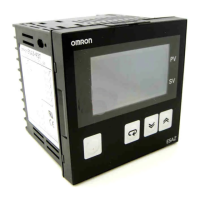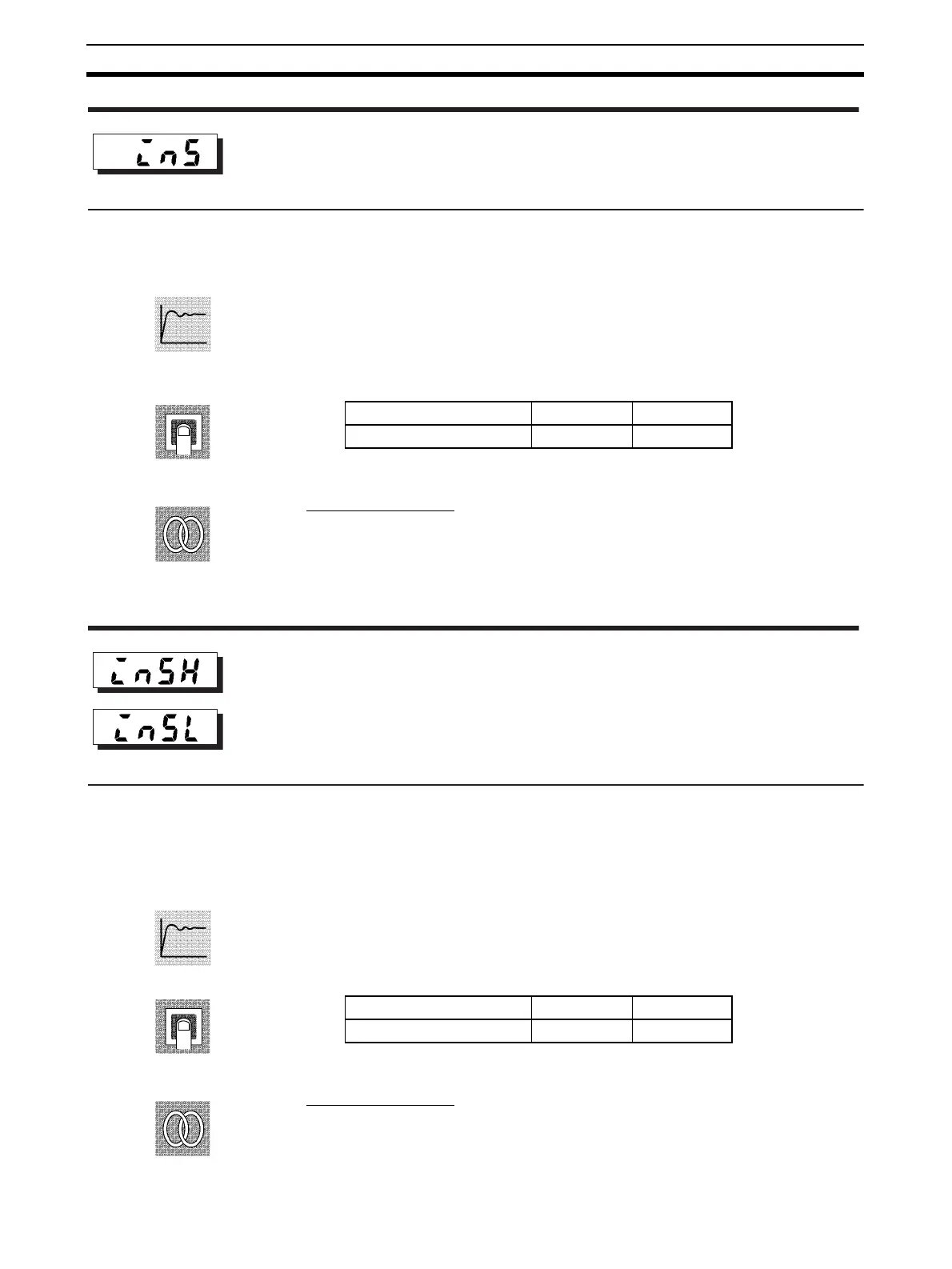90
Adjustment Level Section 5-4
Sometimes an error between the set point and the actual temperature occurs.
To offset this, a value obtained by adding an input shift value to the input is
displayed as the measurement value and used for control.
The entire input range is shifted by a fixed rate (one-point shift). If the input
shift value is set to “
−1°C”, the set point is controlled to a value obtained by
subtracting 1
°C from the actual temperature.
■ Related parameters
“Input type” (initial setting level)
Whereas the entire input range is shifted by a fixed rate (one-point shift) in the
“temperature input shift” parameter, the input range is shifted by two points
(two-point shift) at the upper and lower limits. Two-point shift enables more
accurate offset of the input range compared with one-point shift, if the input
shift values at the upper and lower limits differ.
This parameter sets input shift values for each of the upper and lower limits
(two-point shift) of the input range.
■ Related parameters
“Input type” (initial setting level)
Temperature input shift
The “input type” parameter must be
set to temperature input excluding an
infrared temperature sensor.
Setting Range
Unit Default
−199.9 to 999.9
°C or °F
0.0
Function
Setting
See
Upper-limit temperature input shift value
The “input type” parameter must be
set to only the infrared temperature
sensor.
Lower-limit temperature input shift value
Setting Range
Unit Default
−199.9 to 999.9
°C or °F
0.0
Function
Setting
See

